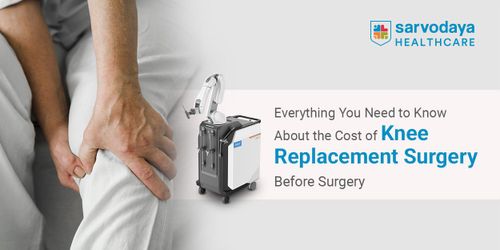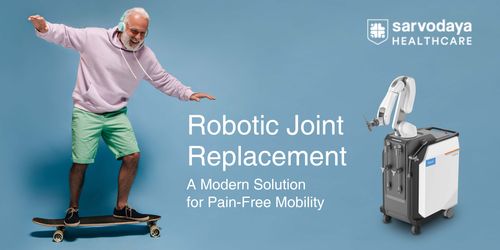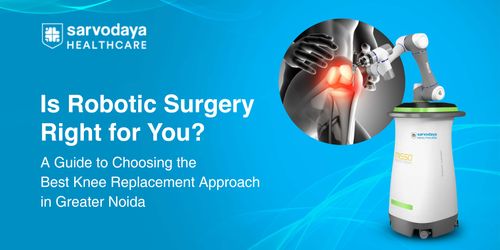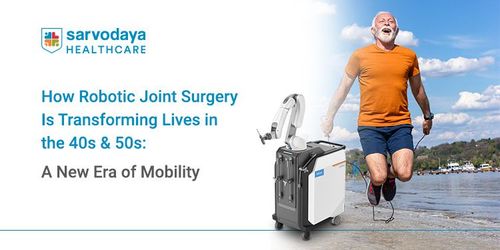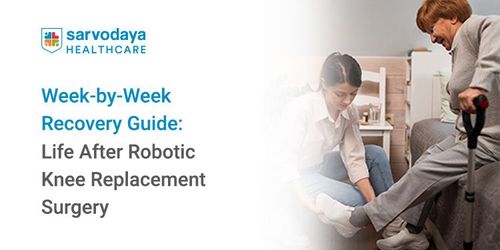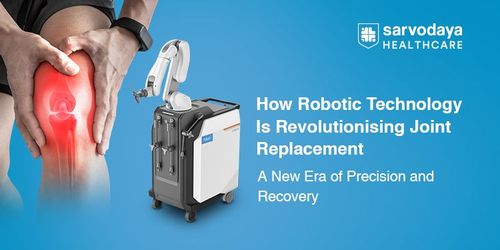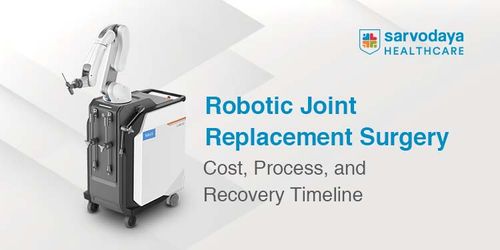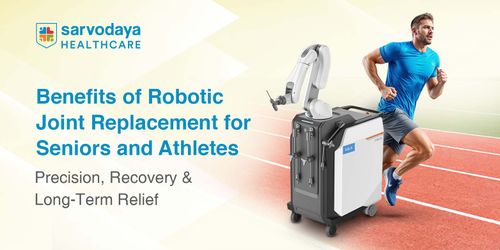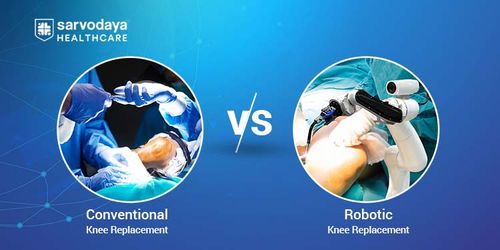Living with arthritis can be physically exhausting and emotionally overwhelming. The chronic nature of the condition, often marked by unrelenting joint stiffness, pain, and loss of mobility, can significantly reduce one's quality of life. Conventional treatments may work for early-stage arthritis, but in severe cases, these approaches often fall short, leaving patients frustrated and in pain.
In this blog, we explore how robotic surgery for arthritis is offering a new lease of life to patients with advanced arthritis.
Understanding Arthritis and Joint Degeneration
Arthritis is one of the most common causes of joint pain and disability in adults, especially those above the age of 50. While arthritis can impact any joint, the knee is one of the most commonly affected areas, particularly in cases of osteoarthritis and rheumatoid arthritis.
Over time, the protective cartilage that cushions the ends of bones wears down, leading to pain, swelling, stiffness, and reduced range of motion. When this deterioration progresses, it leads to severe discomfort even during simple tasks like walking, climbing stairs, or getting out of bed.
An Overview of Robotic Joint Replacement Surgery
Unlike traditional surgery, where the surgeon relies solely on experience and manual techniques, robotic-assisted procedures use a robotic arm guided by real-time imaging and advanced computer software to ensure absolute precision.
Here’s how the procedure generally works:
- A CT scan of the joint is taken to develop a 3D model of the patient’s anatomy.
- Based on this model, the surgeon creates a precise surgical plan for bone preparation and implant positioning.
- During the operation, a robotic arm assists the surgeon in making accurate bone cuts, avoiding unnecessary damage to surrounding tissues.
- The implant is placed exactly as planned, improving joint function and longevity.
Advantages of Robotic Surgery in Arthritis Patients
The shift from traditional techniques to robotic systems in joint replacement surgery is not without reason. For patients with advanced arthritis, especially those experiencing chronic knee pain, robotic surgery offers a suite of benefits that go far beyond just pain relief.
Here are the key advantages of choosing robotic joint pain treatment:
- Greater Surgical Precision: The robotic system enhances the surgeon’s ability to make accurate bone cuts and place the implant with extreme precision, resulting in better joint function and alignment.
- Reduced Postoperative Pain: Since the technology allows for minimal tissue disruption, patients experience less swelling and discomfort in the days following surgery.
- Faster Recovery Time: Many patients undergoing robotic surgery can walk within a day or two after the procedure and return to normal activities much sooner than with traditional surgery.
- Lower Risk of Complications: Fewer errors during surgery mean reduced chances of complications, infections, or implant failure.
- Longer Implant Lifespan: Correct alignment and balance of the implant reduce wear and tear, increasing the longevity of the artificial joint.
- Customised Surgical Plan: Each surgery is tailored to the patient’s unique anatomy, ensuring optimal results, which is especially important in severe arthritis knee replacement.
Ideal Time for Arthritis Patients to Opt for Robotic Joint Replacement
Deciding to undergo joint replacement surgery is a significant step, especially for patients dealing with arthritis. While non-surgical treatments, like medications, physiotherapy, and lifestyle modifications, are typically recommended in the early stages, they may lose effectiveness as the condition worsens. That’s when robotic surgery for arthritis becomes a strong and often necessary consideration.
Here are clear signs that a patient might be ready for a robotic joint replacement:
- Persistent and Worsening Pain: If the pain continues despite medication and rest and limits your ability to perform routine activities such as walking, standing, or climbing stairs.
- Stiffness and Reduced Range of Motion: When the joint becomes increasingly stiff and movement is restricted, making everyday actions difficult.
- Interrupted Sleep: If joint pain keeps you awake at night or causes frequent sleep disturbances.
- X-ray or MRI Results Showing Severe Joint Damage: Imaging studies may reveal extensive cartilage wear, deformity, or narrowing of the joint space.
- Ineffectiveness of Other Treatments: Physical therapy and steroid injections provide only temporary relief, and pain returns shortly after.
Finding the Right Surgeon and Hospital
The success of robotic joint replacement surgery depends not only on advanced technology but also on the skill and experience of the surgical team. Choosing the right orthopaedic specialist and hospital plays a crucial role in achieving a smooth recovery and optimal joint function.
Here’s what to consider when looking for a robotic joint replacement surgeon:
- Specialised Training: The surgeon should be trained in robotic-assisted orthopaedic procedures with a proven track record in robotic knee replacement for arthritis and similar surgeries.
- Access to State-of-the-Art Facilities: Look for a robotic joint replacement hospital that uses modern equipment, offers 3D imaging, and provides a clean, safe environment.
- Rehabilitation Support: Postoperative care is essential. The hospital should offer structured physiotherapy programmes designed to speed up healing and restore movement.
Patients in the Delhi NCR region often benefit from the expertise of a robotic joint replacement surgeon in Greater Noida West, where hospitals are equipped with robotic systems and comprehensive orthopaedic care services.
Conclusion
For individuals suffering from the limitations of advanced arthritis, robotic surgery for arthritis represents a transformative breakthrough. It goes beyond the capabilities of traditional surgery by offering precision, faster recovery, and a better quality of life.
At Sarvodaya Hospital, Greater Noida West, patients benefit from a multidisciplinary orthopaedic team, state-of-the-art robotic surgical systems, and tailored post-operative care. Whether you require expert diagnosis, a chronic joint pain solution, or wish to understand if you’re a candidate for robotic knee replacement for arthritis, the hospital’s advanced infrastructure and highly experienced surgeons ensure you receive the best care. Sarvodaya Hospital is thus the premier robotic joint replacement hospital in Greater Noida dedicated to freeing you from arthritis with robotic joint pain treatment.
Choose robotic surgery and book an appointment today for long-term relief, improved mobility, and the chance to reclaim independence.





